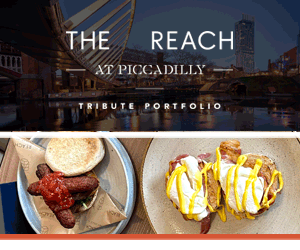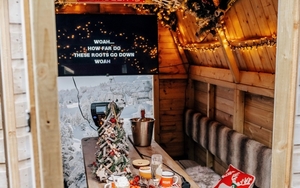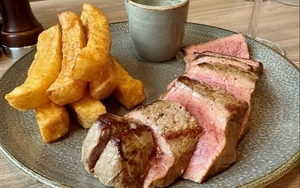The challenges to the price of a pint and positive future outlooks
Is there a more totemic reference point in our shared culture than the price of a pint? When he was younger, my best mate’s dad used to tell himself he’d stop drinking when a pint cost more than a quid. Needless to say he still drinks pints.
The price of a pint goes hand in hand with the challenges that Manchester’s craft brewers, like those across the country, will face in the coming months.
Don't underestimate your pint's link to the environment
By its very design, craft beer is more expensive. The starting premise, unlike large-scale (macro) breweries was to produce better beer that wasn’t brewed to a price point. Go to any of the taprooms along the route and your pint will likely cost more than a J.W Lees or Holts pub. It comes with the territory. But problems faced on the mile are also indicative of the challenges breweries nationwide will face over the coming months.
Inflation and the cost of ingredients presents a serious challenge going forward, as Steve Dunkley of Beer Nouveau explains. There’s already a shortage of brewing malt worldwide. Drought in the US and Canada, as well as bad harvests across Europe have affected major exporters. The results of this will affect UK brewers, large and small. This is on top of the war in Ukraine, which is taking place at the centre of the world’s granary.
Similar challenges come with other ingredients, and whilst you might not be thinking about it when you take that first swig of your pint, the climate crisis is a factor. Germany, a major hop exporter, has experienced notable droughts in recent years that have severely affected harvests. Craft beer by design often requires more hops. Inflation and shortages mean prices go up.
As Steve points out, most brewers buy their hops one or two years in advance on a contract so that growers know how much to plant. This has in turn kept prices stable, cheap even. With the pandemic leading to less beer being produced and sold, many brewers either cancelled their contracts or made hop heavier beers in order to use up the excess. This in turn led to more single hop IPAs and other heavily hopped beers. Steve says this is likely to stop.
A shortage of almost everything except inflation
Different ingredients will affect different breweries of course. If you’re a brewery that makes beers using large amounts of fruit, like Wander Beyond per say, you’re going to be watching news on the Scottish raspberry harvest extremely carefully. It’s no coincidence that there was a notable reduction in raspberry beers in the last year. Then there’s the other materials.
Aforementioned can shortages, keg shortages, a shortage and subsequent rise in price of CO2, price rises in water, yeast and trade effluence, the spectre of the pandemic and rising energy prices all present major challenges too. Breweries that managed to get themselves on a fixed-rate energy tariff will be slightly better off. There’s no telling the rise in prices and what support will be put in place from a government that itself is drunk on power and seemingly void of pragmatism in the face of disaster.
All this on top of the logistical nose spiting of Brexit.
“Sending a pallet to Sweden used to be £160 and recently we got quoted about £1400. I think that’s just because they didn’t want to have to deal with all the paperwork. We got it there eventually but it was about £700.” Tom Bacon, Sales & Distribution Manage from Wander Beyond, tells me. The brewery’s export has dropped by 70%.
“People say beer is recession-proof because people always drink and I do see that. I see people always trying to support their local and support independents.” Tom says. “It’s going to be okay. I keep saying that into the mirror every morning.”
As Steve points out, the times we live in have always dictated what we drink. “Coming out of the World War II, when rationing started to end, the accountants were in charge. People’s tastes in beers were dictated by what they could get. Nobody had any cash then either, so again it was this is what you can get for your money.”

“The brewers were wanting as much profit per beer as they could possibly get, so you ended up with Greene King IPA and all those beers and Worthington Bitter. There’s nothing wrong with those beers. They just weren’t very creative and there wasn’t much flavour to them.”
“Now, craft brewers are having to brew to a price point and a lot of them are realising they don’t know how.” He adds.
Reasons to be cheers-ful
“Manchester is the best city in the world to go drinking”
“It may not have what people consider to be the best breweries in the world but we’ve got so many really fucking good ones.” Steve says.
“It’s not just everyone producing IPA. You’ve got a lager brewery down the road. We’ve got me specialising in heritage and historical brewing. You’ve got Wander Beyond doing a really good 2.4% lager now, not just the lactose stuff. You’ve got Alphabet doing really good juicy, fruity hoppy beers which appeal to the younger drinkers.”
This positivity for the Manchester craft beer scene is shared by everyone I speak to. Whether that’s punters, staff who’ve left other jobs and other cities to come work in tank-filled railway arches or the brewers themselves. Everyone proudly biased.
Whilst the expected closure announcement of Beer Nouveau (Steve informed us before writing this piece) provides a bittersweet postscript to this article, there is excitement on the mile and beyond. On a blistering hot day in summer, myself and Neil, drop in to all of the open taprooms on North Western Street as well as those around Red Bank. All were abuzz with activity.
Wander Beyond has recently refitted its taproom with a comfortable cabin-like space for year-round drinking, whilst ABC continues to make the most of its uniquely shielded front yard. Both have celebrated recent birthdays and both expect footfall to continue, even throughout the winter.
“We’re a very snug, cosy taproom. Lots of furnishings. Our speciality in big milk stouts also plays into the cosier season, if you want to call it that. We’ll be staying open, Friday to Saturday.” Tom from Wander Beyond says.
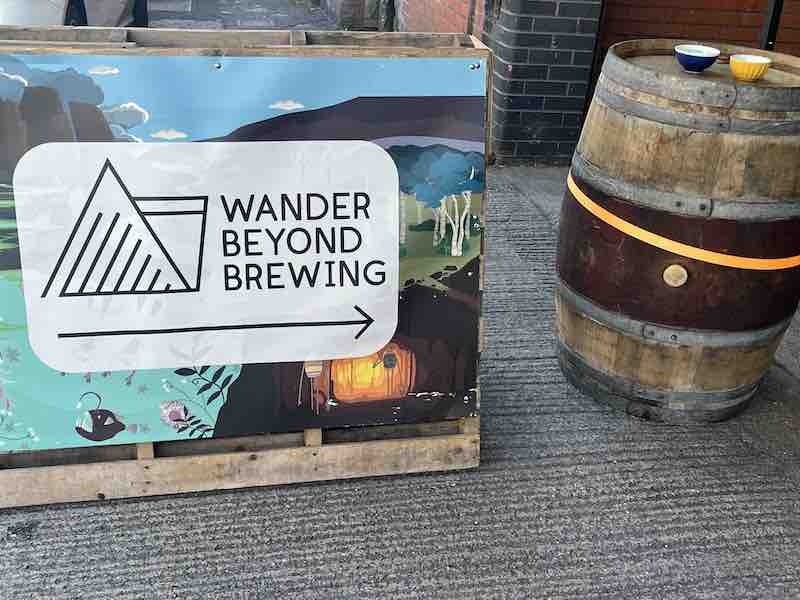
Elsewhere, the Manchester craft scene continues to explode. Two new breweries have launched in recent months alone. Green Arches recently opened its doors on Red Bank. Helmed by two brewers formerly of Beatnikz which closed earlier in the year. Big Trip meanwhile is operating out of New Islington in Ancoats and has already debuted at Leeds International Beer Festival.
The scene moves fast too. Since beginning this article, Pamona Island Brew Co have announced plans to leave Escape to Freight Island by October 28. The brewery’s beer will still be sold there but all attentions will be on a pub which they plan to open in the former Chaophraya site above Sam’s Chop House in the city centre. The pub, North Westward Ho, will launch early to mid 2023.
The Beer Mile is not just about taprooms limited to a geographical location. It’s presence is felt across the city. Whether in locally-minded bottle shops, of which there are many, to the pumps and taps of pubs and bars across Greater Manchester.

We see the launch of Exhibition, a three kitchen food hall-style venue that alongside an impressive food line-up - Baratxuri, Osma and Caroline Martins - boasts tanks of freshly brewed Manchester Union Lager. A massive vote of confidence for local beer, the mile especially.
“A lot of people at the moment are brewing light-style lagers. I think they [Exhibition] really got behind the bigger flavour, especially because of the food offering. I think our beer really works in a food environment. To have someone effectively doing a taproom, they made the investment in the tanks themselves, we were really flattered by the idea that they believed in us enough to put them in.” Will Evans, co-founder of Manchester Union Lager says.
Walk back towards Ancoats and Track sits as a beacon of great beer, community and vision. Sonoma, on cask, the brewery’s trademark 3.8% pale ale, flies out of the pumps and by the time we visit in mid-afternoon, Rise, the day’s food vendor is long sold out.
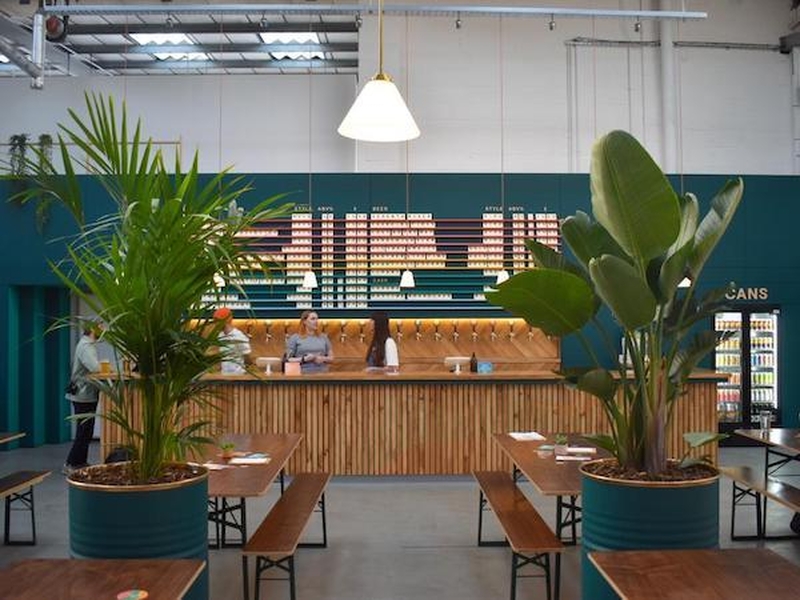
The colourful taproom, which brings to mind Wes Anderson if he did a joinery course, hosts nightly events from running clubs to mushroom workshops and has already cemented itself as a stop-off for the throngs of City fans heading to the nearby Etihad. A special taproom and a blueprint for others.
Whilst the beer mile may not be the conveniently boxable area and concept that Bermondsey provides, no matter how much journalists like myself might wish it to be for the sake of neatly organised articles, it’s one hell of a crawl. Supersize it to two miles via Redbank and you’ve got yourself a serious day out.
The Manchester craft beer scene inside and outside of the ring road faces many challenges in what will be a pummelling winter, but attitudes are resolute. In the meantime, the best way to celebrate it is to go for a drink. “Even inside the central ring road, we’re cutting off Squawk and Beer Nouveau there. I think there’s 12 breweries, which is just incredible.” Tom from Wander Beyond says.
“For the concentration in the square mile, I don’t see many other places having the same quality of breweries like that of Manchester. It’s something we should be shouting about from the rooftops.”
Follow Davey on Twitter and Instagram: @dbretteats






